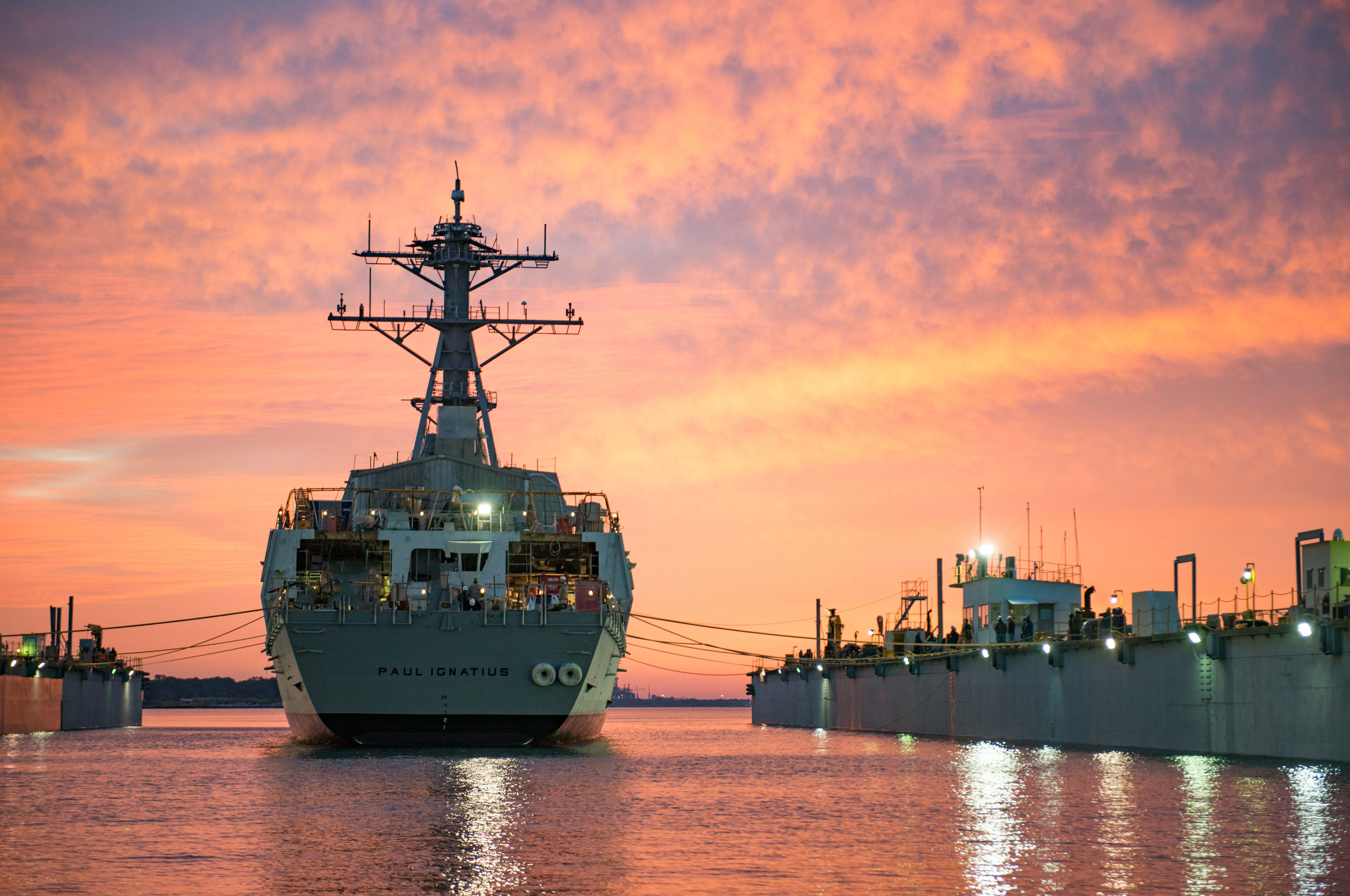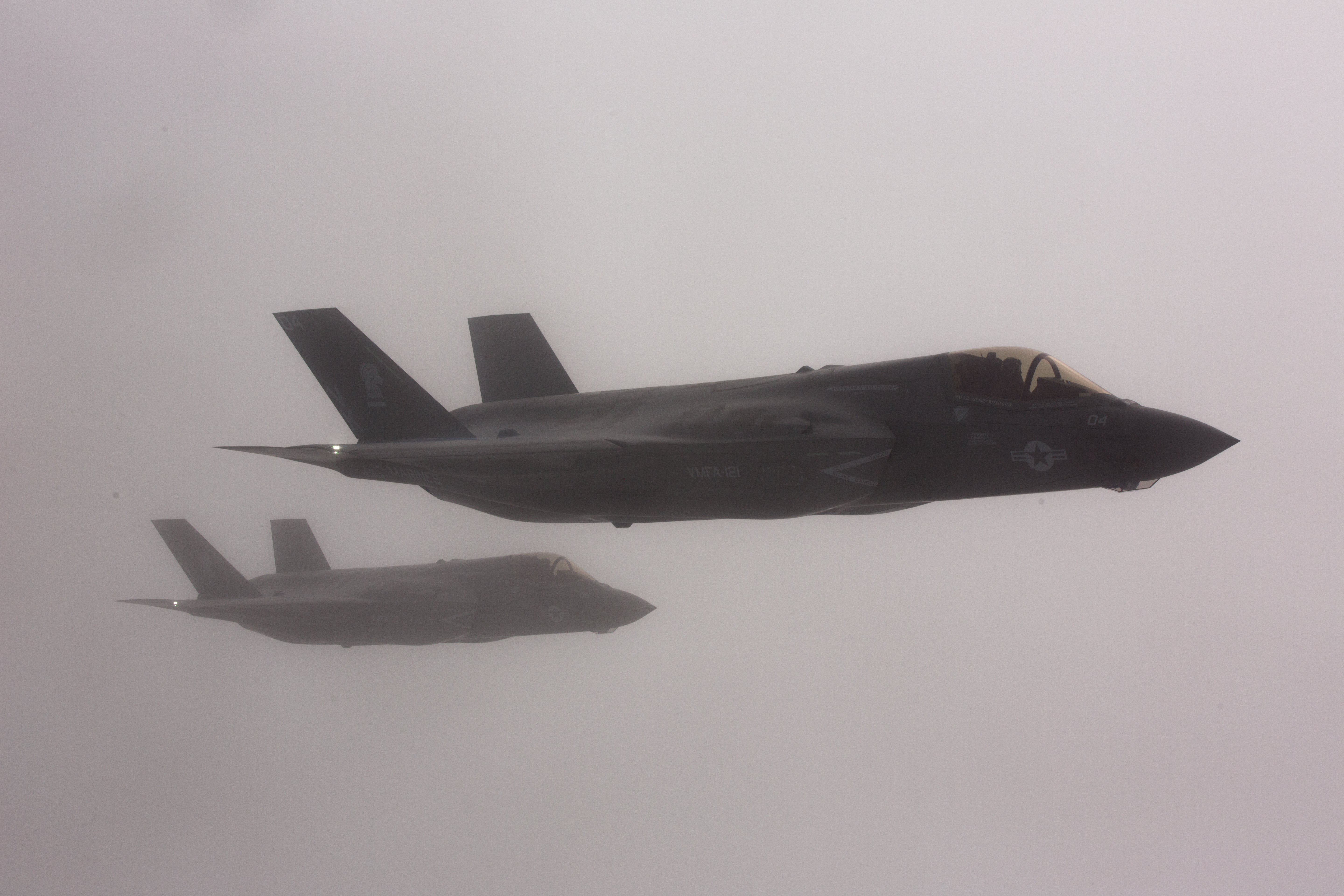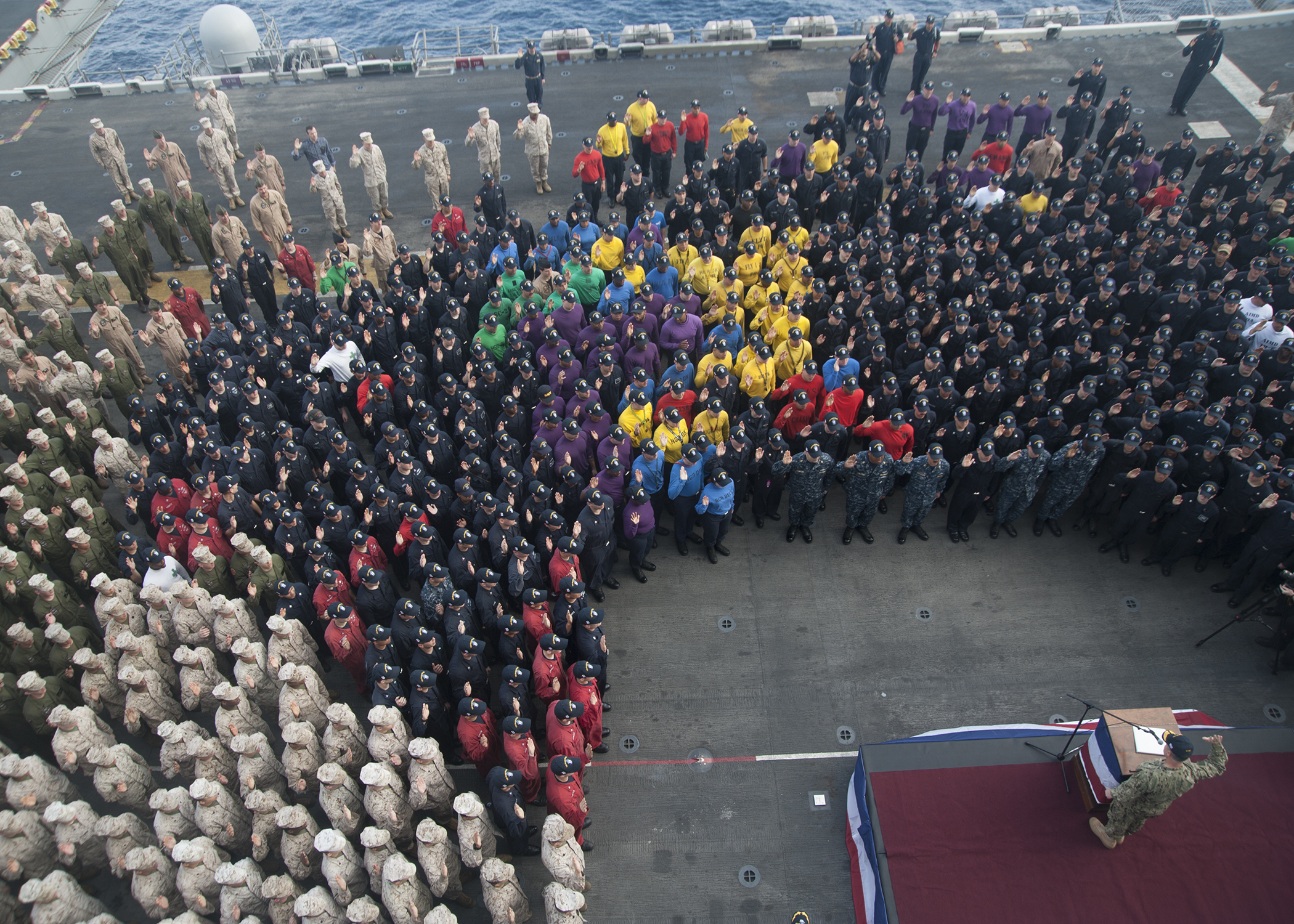
This post has been updated following Pentagon and Navy press briefings on the FY 2018 budget.
THE PENTAGON – The Department of the Navy’s $180-billion budget request sets out to improve overall readiness of the Navy and the Marine Corps while making only modest asks for new aircraft and ships.
While the Trump Administration has pledged to plus-up the military as a major policy pillar, Secretary of Defense James Mattis has said this year’s budget would be focused on shoring up lingering readiness shortfalls the Navy and Marine Corps have shouldered for more than a decade.
The total $639 billion Pentagon budget – split between the $574.5 billion base budget and the $64.6 billion in Overseas Contingency Operations – stresses readiness throughout the services but leaves major acquisition programs marking time while Pentagon leaders craft a new national security strategy.
In total, the DoN budget sees a $6-billion increase overall but reductions in the planned ship and aircraft expenditures compared to the Fiscal Year 2017 budget request.
Officials have said repeatedly that several major acquisition decisions would be codified in the FY 2018 budget, but clues to how the Navy and Marine Corps will expand are sparse in this year’s submission, given that it does not project out beyond the current year as is typical for budget requests.
Neither the services nor big Pentagon included a five-year funding outlook projections in this year’s submission to Congress. The so-called future years defense program (FYDP) funding profile is a key indicator to industry and Congress on the priorities of the military going forward past the current budget year.
The last time the Pentagon did not submit a FYDP was for the Fiscal Year 2010 budget – the first military budget for the fledgling Obama Administration.
John Roth, acting as the Pentagon comptroller, told reporters on Tuesday the lack of a longer-range outlook was at the behest of Mattis.
“The secretary has not spent any time at all looking at anything beyond FY ’18 to date. In large part we’ve begun the process of developing the new defense strategy, and the intent was that the new defense strategy will inform anything beyond FY ’18,” he said.
“You will not see a growth in force structure [in FY 2018]. You will not see a growth in the shipbuilding plan. You will not see a robust modernization plan.”
Shipbuilding

While the Navy spent the early part of the year building a public case for a larger fleet, the 2018 budget reduces the shipbuilding account by $1.2 billion, or about 6.3 percent. The budget submission includes eight new hulls in FY 2018, Deputy Assistant Secretary of the Navy for Budget Rear Adm. Brian Luther told reporters on Tuesday.
The $19.9 billion buys the last two Block IV Virginia-class attack submarines (SSN-774) for $5.2 billion and two Flight III Arleigh Burke guided-missile destroyers (DDG-51) for $3.6 billion. The destroyers would be part of a ten-ship multi-year procurement between Huntington Ingalls Industries and General Dynamics Bath Iron Works.
The budget includes a $4.4-billion increment for Ford-class carriers that includes the formal start of the third Gerald R. Ford-class aircraft carrier, Enterprise (CVN-80), and the last block of funding for the under-construction John F. Kennedy (CVN-79).
The budget also sets aside $636 million for a single Littoral Combat Ship, two less than the Navy said it would need to purchase to keep both current LCS yards viable ahead of a frigate competition leading to a construction contract award in 2020. The outlay also includes $541 million for a John Lewis-class oiler and $76 million for a T-ATS fleet tug.
The budget also set aside $1.8 billion for advanced procurement of the next generation Columbia-class nuclear ballistic missile submarine (SSBN-826).
Other major expenditures in the shipbuilding account includes $1.7 billion for the USS George Washington (CVN-73) refueling and complex overhaul, $213 million for three Ship-to-Shore Connectors, and $32 million for one LCU-1700 next-generation landing craft.
Notably absent from shipbuilding budget are funds for a new San Antonio-class amphibious transport dock (LPD-17). As part of the Fiscal Year 2017 budget, Congress included more than a billion dollars for a 13th LPD hull, which would serve as a bridge and keep the production line going ahead of the transition to the LX(R) program, which is based on the LPD design.
After years of resistance, the Navy has elected to adopt Congress’ plan to modernize the Ticonderoga-class guided-missile cruisers as part of the FY 2018 submission.
Under the 2/4/6 plan, “two cruisers a year would enter a modernization period that could last no longer than four years, with no more than six cruisers in the yard for modernization at any given time,” USNI News wrote last year.
The service budgeted for an additional thousand sailors to crew the additional cruisers that will not be in mothballs.
Aircraft

The service is also making a modest aviation buy, requesting about $1 billion, or 7 percent, less than the FY 2017 enacted budget.
The $15.2-billion budget pays for four F-35C carrier variant Joint Strike Fighters – two less than planned – and 20 F-35B of the Marine Corps’ short-takeoff and vertical-landing variant, for a total of $3.7 billion in JSF expenditure. Rounding out tactical aviation, the Navy is set to buy 14 F/A-18E/F Super Hornets.
Luther said the reduction in the F-35C totals routed more money to personnel, equipment, logistics and more for the F-35C to keep its initial operational capability declaration on track.
“We had to make hard choices. We maintained the readiness accounts and we had to balance somewhere,” Luther said.
“We tried to hold the line the best we could in our procurement accounts… but reducing two F-35s allowed us to maintain the IOC in ’18 for the F-35C.”
The Navy is also spending $1.4 billion for six P-8A Poseidon maritime surveillance aircraft, $636.3 million for three MQ-4C Triton unmanned surveillance aircraft and $809.5 million for five E-2D Advanced Hawkeye carrier-based aerial radar aircraft.
The Navy also elected not to continue purchasing any additional MQ-8C Fire Scout rotary-wing UAVs due to a program restructure that capped the total needed at 60 airframes.
“We truncated the buy of the Fire Scout because we have sufficient inventory on hand to address that,” Luther said.
Outside of the F-35, the Marines’ largest aviation expenditure was 22 AH-1Z Zulu attack helicopters – five fewer than anticipated in the 2017 budget.
The Navy will also start procurement of the first six CMV-22B Osprey the service intends to use to replace its current crop of C-2A Greyhound Carrier Onboard Delivery aircraft.
Personnel, Research and Development

The budget also pays for a personnel expansion and a 2-percent pay increase for sailors and Marines. The Navy will spend $29 billion and will grow by 4,000 sailors to a total of 327,000 personnel.
The Marines will spend $13.3 billion on its active duty personnel — $500 million more than 2017 – and maintain an end-strength of 185,000.
The Navy has set aside $222 million for the carrier-based MQ-25A Stingray unmanned aerial refueling tanker program. The Marines have $176 million set aside for the first 26 Amphibious Combat Vehicles as their number one research and development priority. The Marines are also asking for three Ground/Air Task Oriented Radar systems for $139 million.





